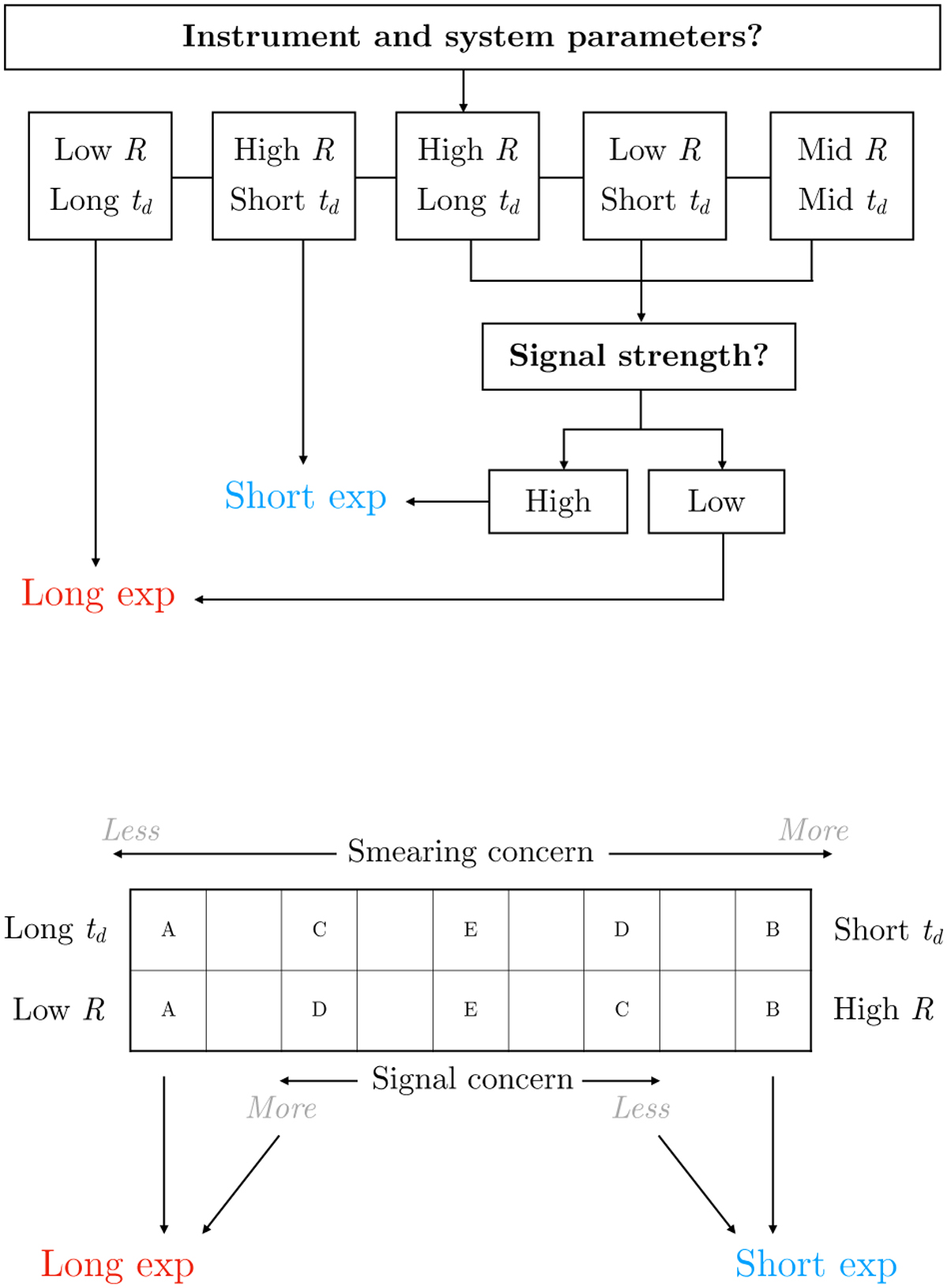Fig. 8

Download original image
Generalised recommendation for a single target. Top panel: a flow chart that observers may consult while planning their observations. First, observers should consider their instrument and system parameters. For lower spectral resolutions (R) and longer transit durations (td), longer exposures may be prioritised; for the inverse case, shorter exposures are more suitable. For other cases, the choice is determined by what signal strength is possible. Bottom panel: the logic of the top schematic is illustrated here. Smearing is more of a concern for low R and long td (case A) and less of a concern for the inverse (case B). For all other cases (C, D, E), a larger concern for signal (i.e. lower signal strength) encourages longer exposures and a lesser concern encourages shorter exposures.
Current usage metrics show cumulative count of Article Views (full-text article views including HTML views, PDF and ePub downloads, according to the available data) and Abstracts Views on Vision4Press platform.
Data correspond to usage on the plateform after 2015. The current usage metrics is available 48-96 hours after online publication and is updated daily on week days.
Initial download of the metrics may take a while.


